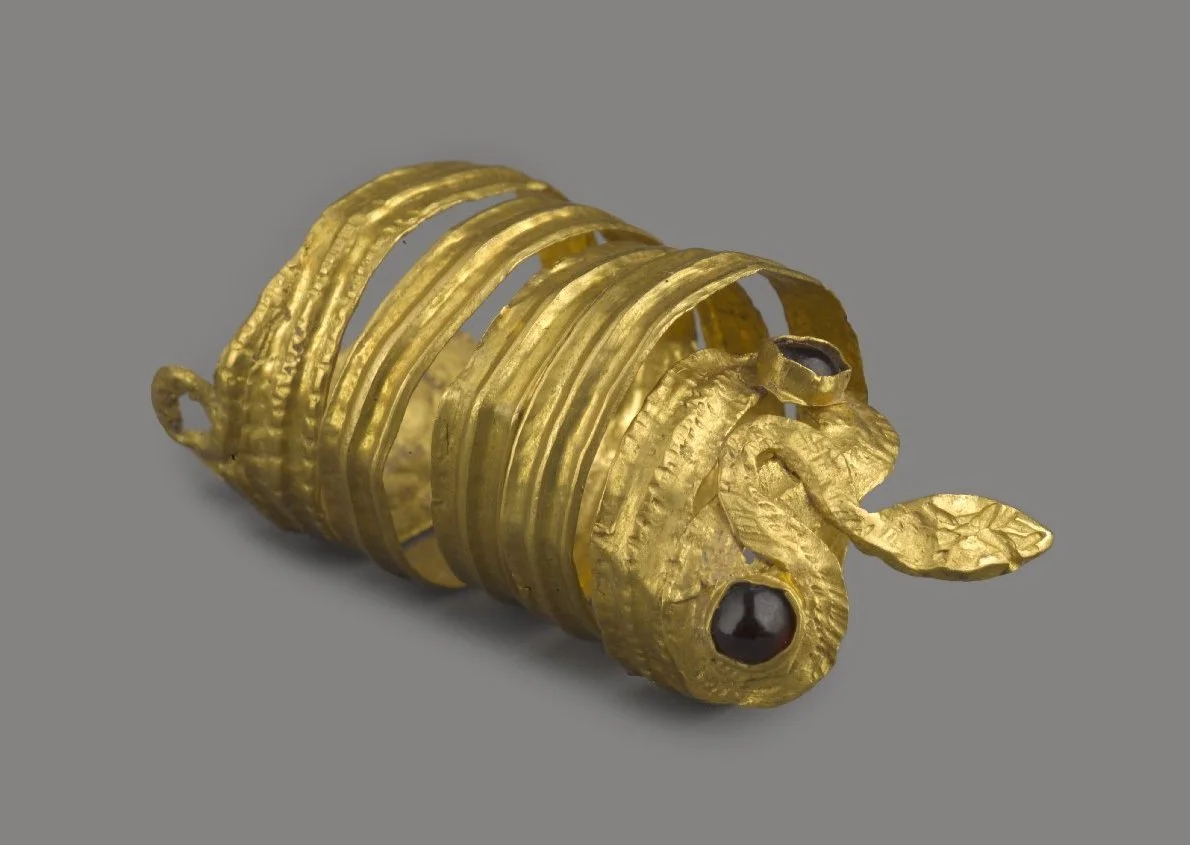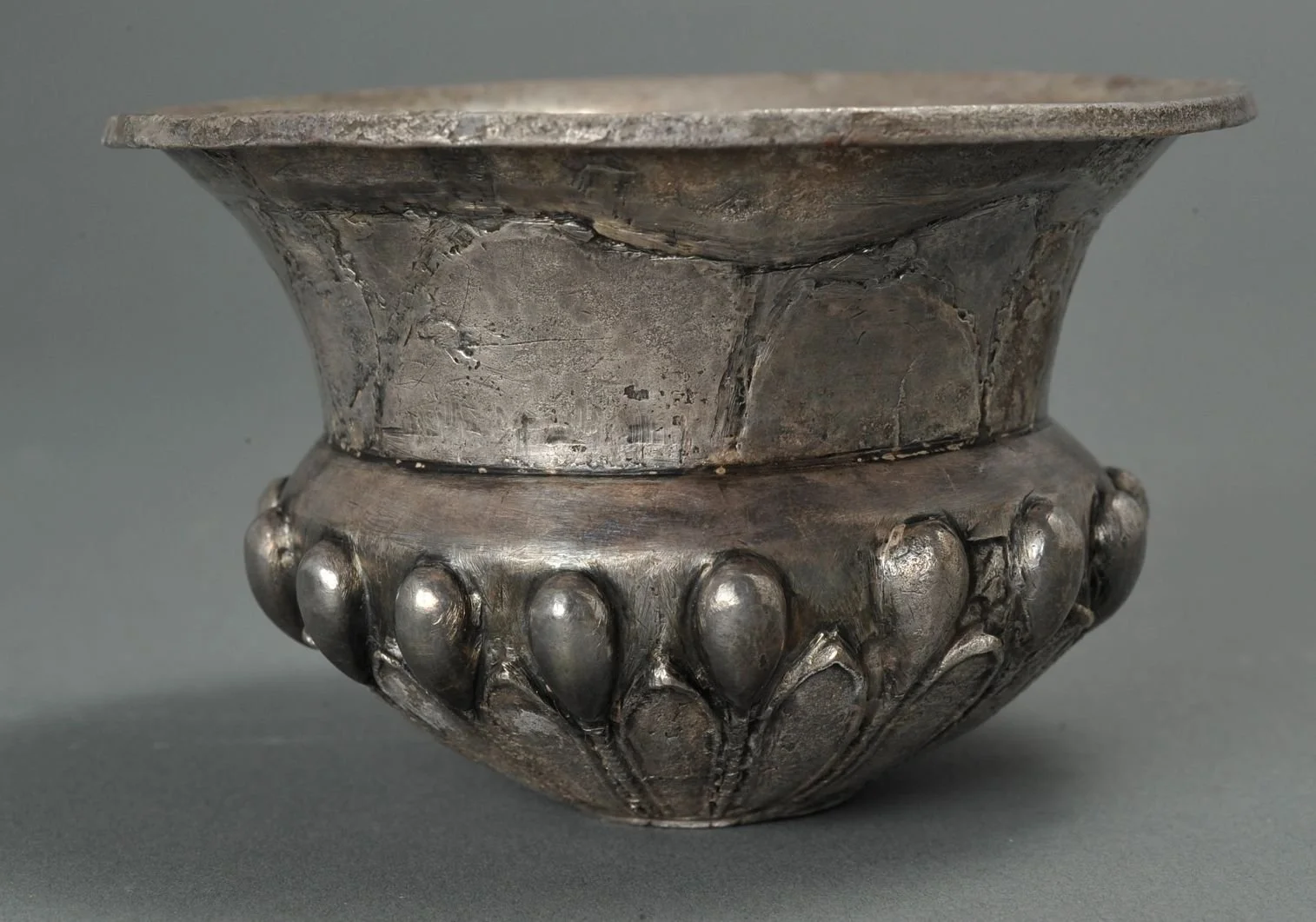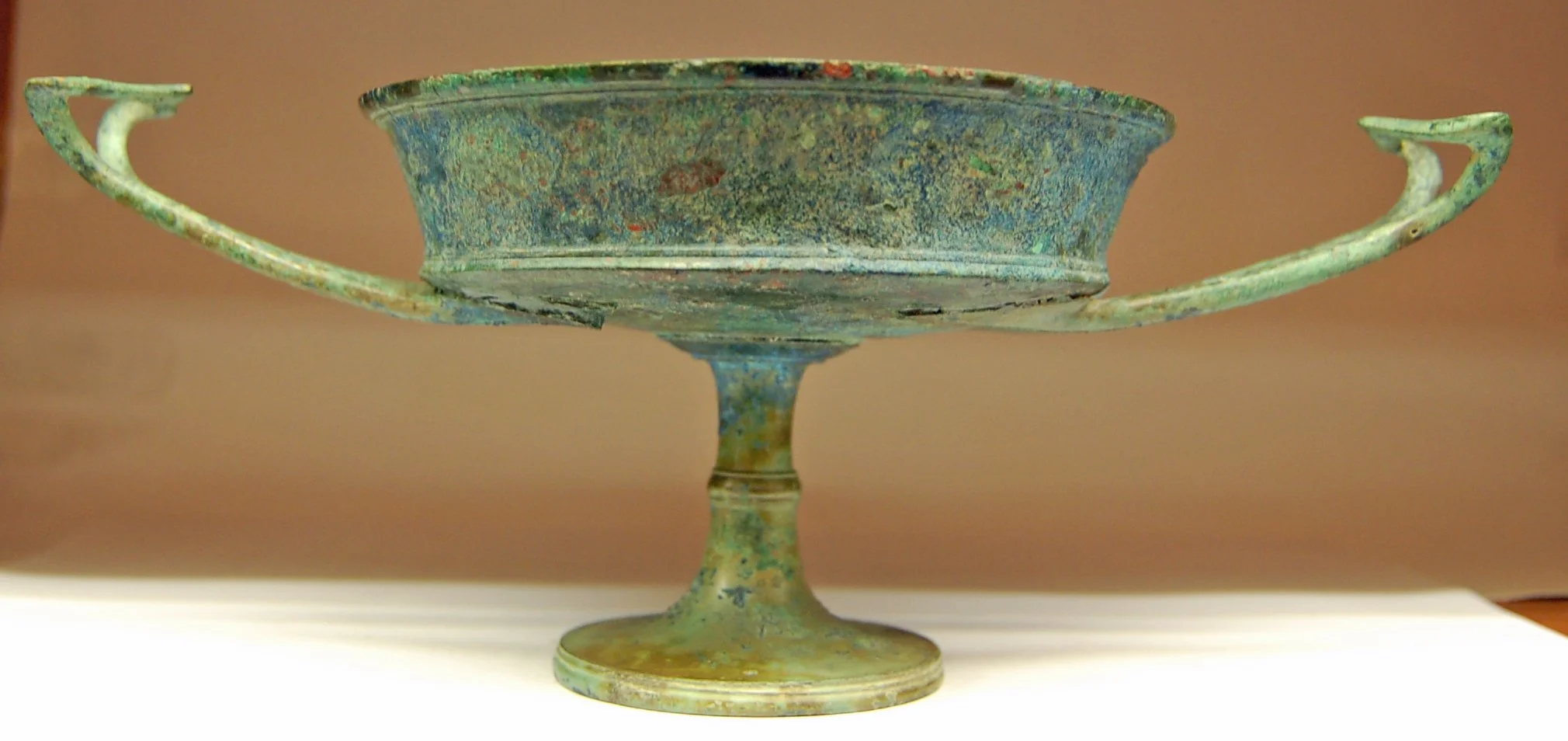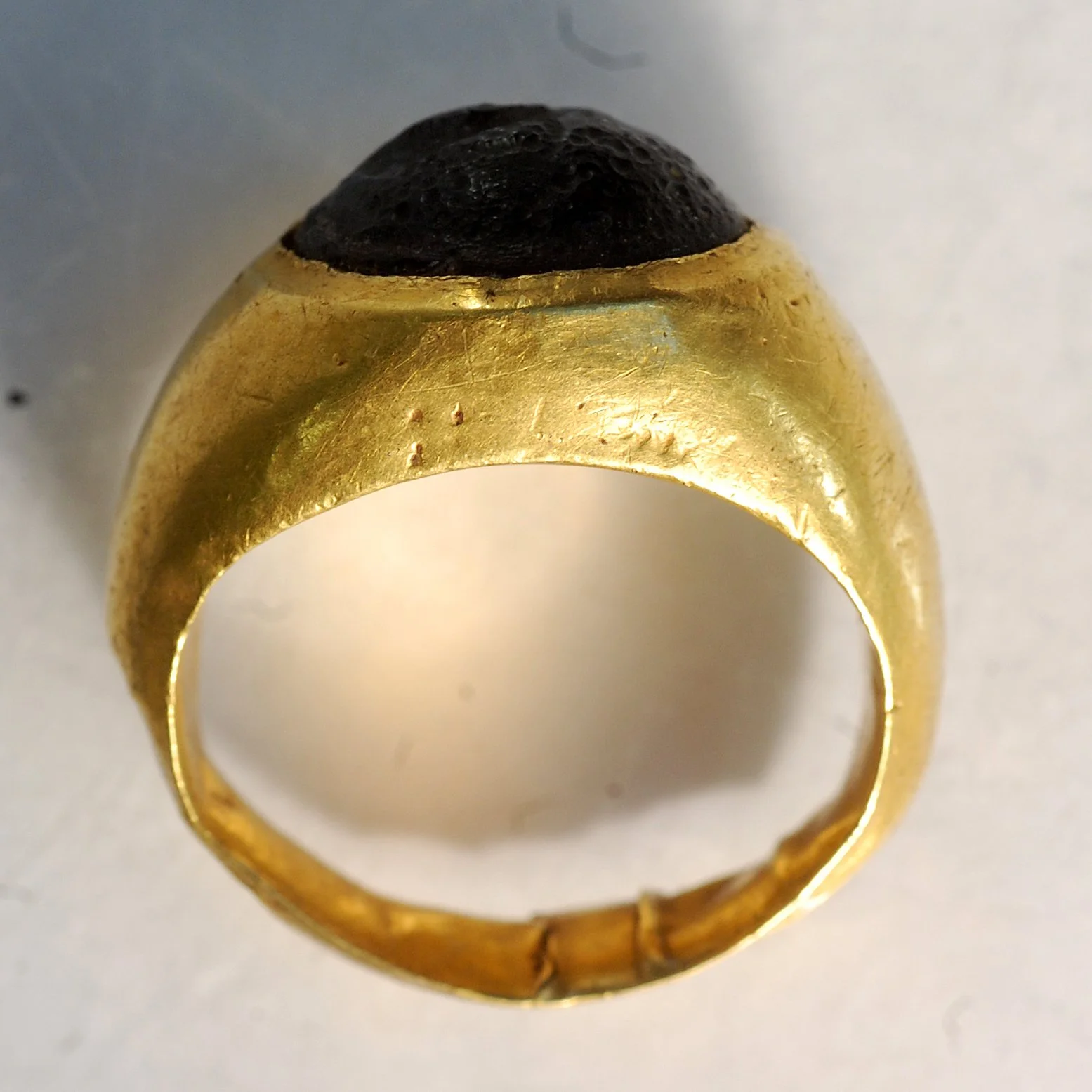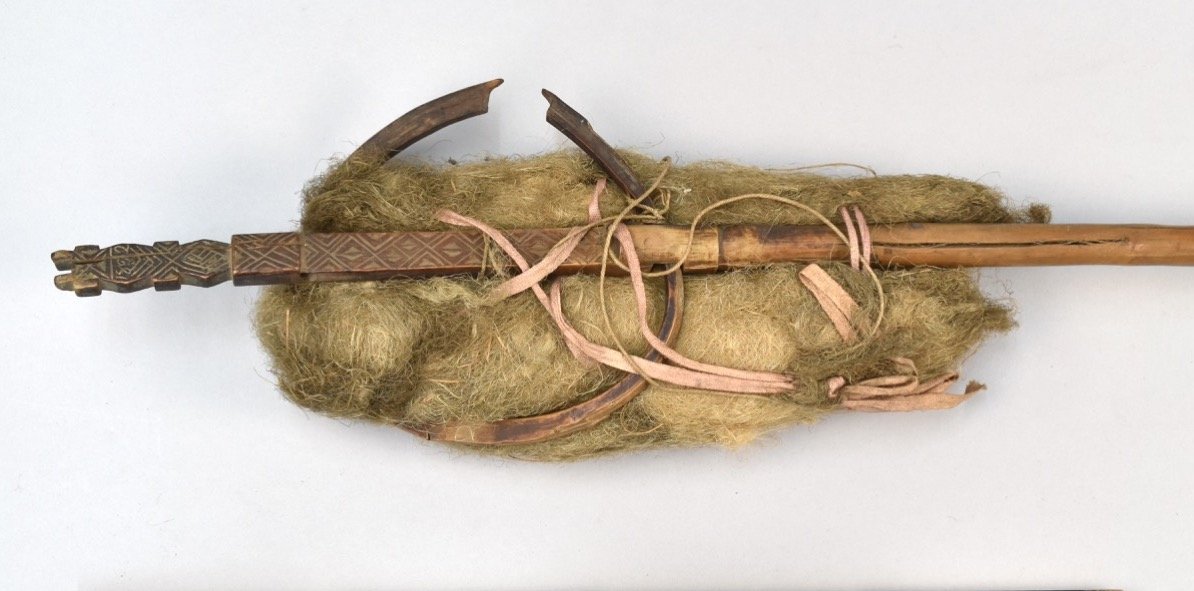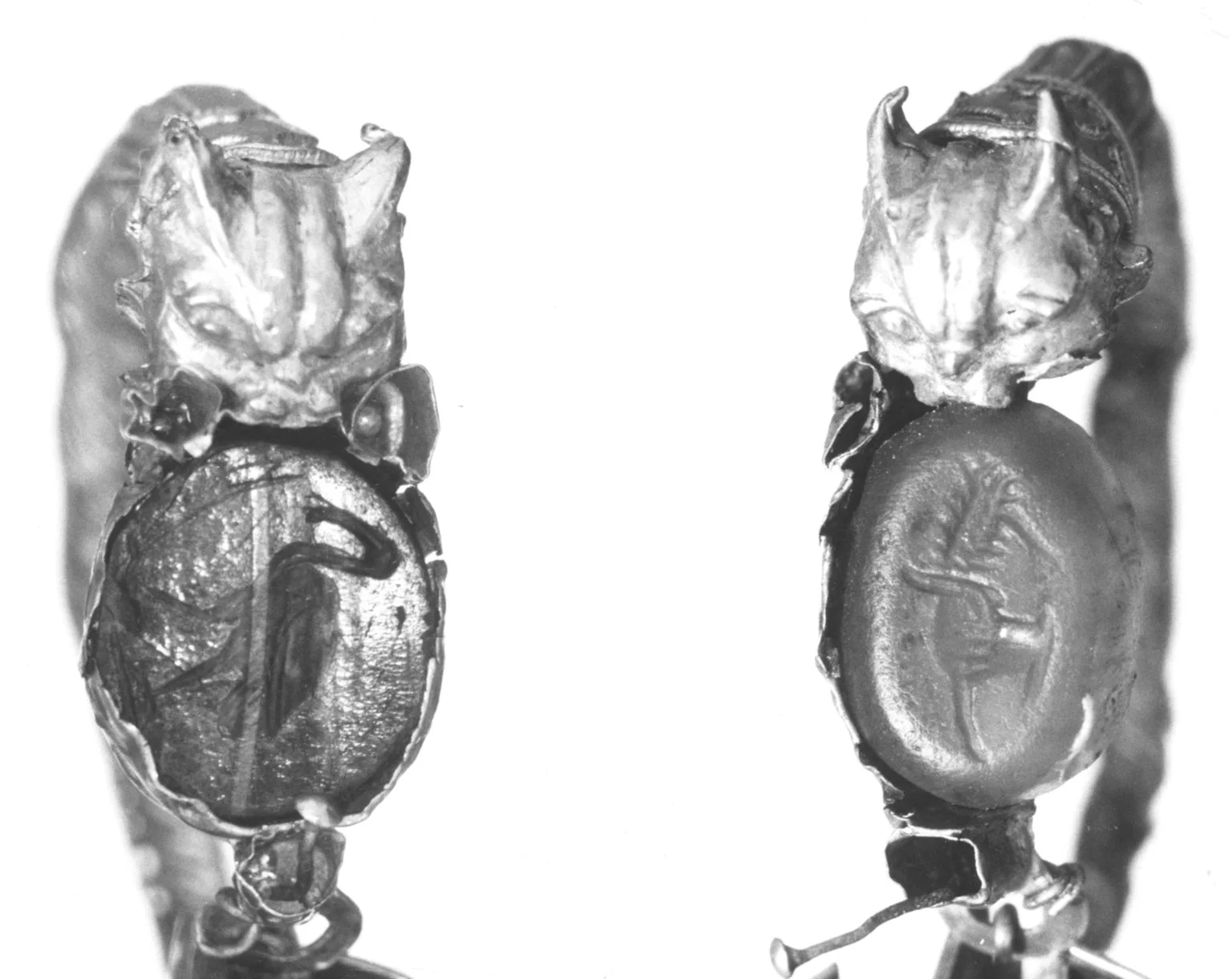
Virtual Museum
Explore collections of Ithacan antiquities in museums in Europe and the US.
From Ithaca to London, Paris, and beyond
This page offers a guide to antiquities found on Ithaca during the 19th and 20th centuries which have come to form part of the collections of major foreign museums far beyond the island.
The early antiquarians who visited Ithaca — from the Venetian family Nani in the 1750s to the British colonel Leake in the early 19th C. and others — collected objects which are now found in foreign museums.
This collection has been put together by Gerasimos Livitsanis.
William Martin Leake, antiquarian and colonel (National Portrait Gallery, London)
Selected highlights
These highlights are just the beginning.
Explore even more fascinating objects from Ithaca below.
Brooklyn Museum in New York
Five gold jewels from the collection of Captain Antonio Guitiera, administrator of the island under British rule during the years 1811-14.
Ring in the form of a coiled serpent, set with garnets. Excavated in Ithaca by Captain Antonio Guitiera in 1811-1814. (300-200 BCE.)
A pair of gold earrings with lynx heads. Excavated in Ithaca at Stavros by Captain Antonio Guitiera in 1811-1814. (200-100 BCE.)
A pair of ornate earrings with lion's heads. Excavated in Ithaca at Aetos by Captain Antonio Guitiera in 1811-1814. (450-200 BCE.)
-
1. Ring in the form of a coiled serpent, set with garnets. Excavated in Ithaca by Captain Antonio Guitiera in 1811-1814.
Date: 300-200 BCE.
References:
Λιβιτσάνης Γ., «Οι ανασκαφές Guitiera στην Ιθάκη την περίοδο 1811-1814», Πρακτικά ΙΒ΄ Πανιονίου Συνεδρίου, υπό προετοιμασία.
Steinhart M. & E. Wirbelauer, Aus der Heimat des Odysseus, Mainz 2002, p. 137 Fig. 59, 207-208.
2. A pair of ornate earrings with lion's heads. Excavated in Ithaca at Aetos by Captain Antonio Guitiera in 1811-1814.
Date: 450-200 BCE.
References:
Λιβιτσάνης Γ., «Οι ανασκαφές Guitiera στην Ιθάκη την περίοδο 1811-1814», Πρακτικά ΙΒ΄ Πανιονίου Συνεδρίου, υπό προετοιμασία.
Steinhart M. & E. Wirbelauer, Aus der Heimat des Odysseus, Mainz 2002, pp. 137 Fig. 59, 205-206.
3. A pair of gold earrings with lynx heads. Excavated in Ithaca at Stavros by Captain Antonio Guitiera in 1811-1814.
Date: 200-100 BCE.
References:
Λιβιτσάνης Γ., «Οι ανασκαφές Guitiera στην Ιθάκη την περίοδο 1811-1814», Πρακτικά ΙΒ΄ Πανιονίου Συνεδρίου, υπό προετοιμασία.
Steinhart M. & E. Wirbelauer, Aus der Heimat des Odysseus, Mainz 2002, pp. 137 Fig. 59, 206.
The British Museum
18 illustrated pieces. Two more illustrated coins seem to be forgeries.
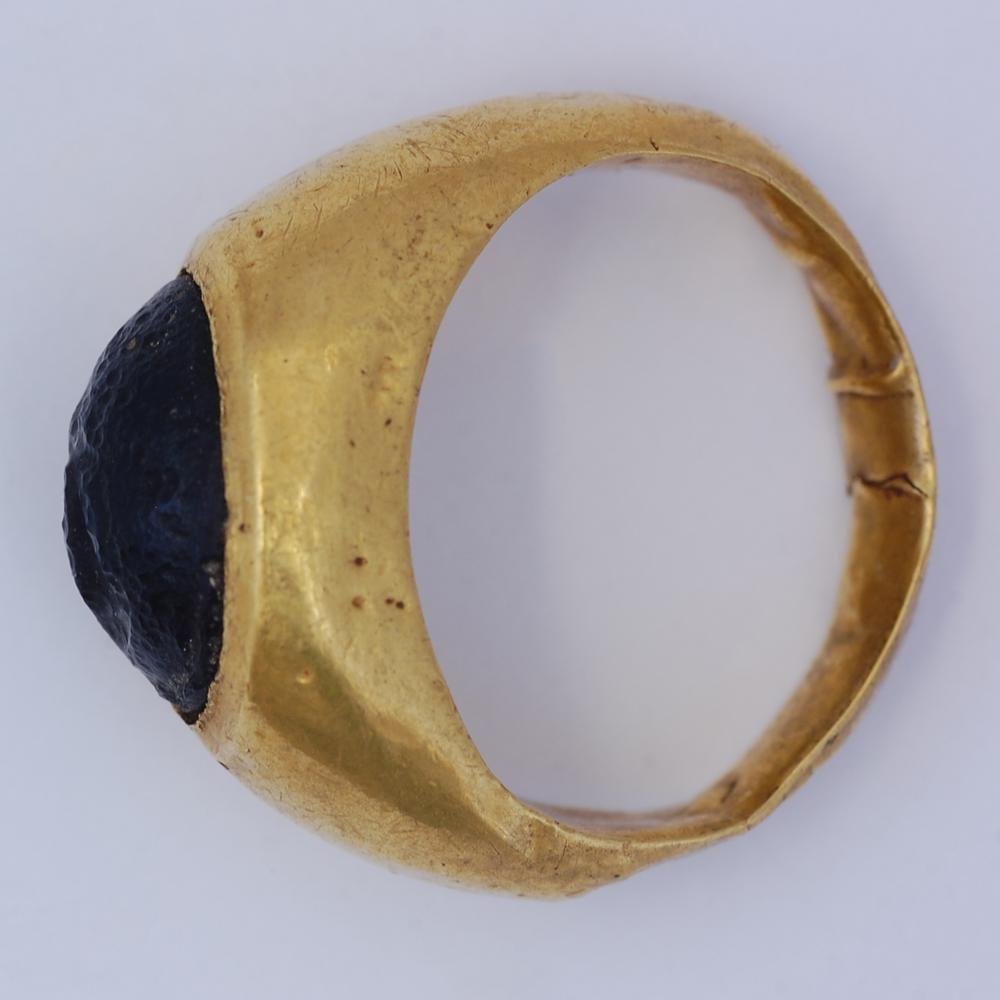
Gold finger-ring. Excavated at Stavros in June 1814 by Thomas Burgon. (350-250 BCE)
Bronze Ithacan coin. Excavated at Aetos by Charles Philippe de Bosset. (4th-2nd century BCE)
Bronze Ithacan coin. Excavated at Aetos by Charles Philippe de Bosset. (4th-2nd century BCE)
Bronze seal with a geometric design and the handle in the form of a bird. (800-700 BCE)
Late Helladic III bronze dagger. (1200-1100 BCE)
Cameo; onyx; Cupid standing to front, holding reversed torch in right hand and bow in left; in gold pendant mount with suspension loop and rope decoration. (18th century)
Lead sling bullet; almond shape; inscription on both sides.
Silver finger-ring. Excavated at Stavros in June 1814 by Thomas Burgon. (350-250 BCE.)
Bronze kylix. Excavated at Stavros in June 1814 by Carl Haller von Hallerstein (350-250 BCE.)
-
1. Sixty-eight astragaloi, excavated in Ithaca at Stavros by Thomas Burgon, in June 1814.
Date: Uncertain.
Steinhart M. & E. Wirbelauer, Aus der Heimat dGlass bowles Odysseus, Mainz 2002, p. 138.
2. Glass bowl.
Date: Roman
3. Cameo; onyx; Cupid standing to front, holding reversed torch in right hand and bow in left; in gold pendant mount with suspension loop and rope decoration.
Date: 18th century.
4. Bronze Ithacan coin. Excavated at Aetos by Charles Philippe de Bosset.
Date: 4th-2nd century BCE.
De Bosset, C.-P., Essai sur les médailles antiques des îles de Céphalonie et d’Ithaque, Londres 1815, Pl. 5.
5. Bronze Ithacan coin.
Date: 4th-2nd century BCE.
6. Bronze Ithacan coin.
Date: 4th-2nd century BCE.
7. Bronze Ithacan coin. Excavated at Aetos by Charles Philippe de Bosset.
Date: 4th-2nd century BCE.
De Bosset, C.-P., Essai sur les médailles antiques des îles de Céphalonie et d’Ithaque, Londres 1815, Pl. 5.
8. Bronze Ithacan coin. Excavated at Aetos by Charles Philippe de Bosset.
Date: 4th-2nd century BCE.
De Bosset, C.-P., Essai sur les médailles antiques des îles de Céphalonie et d’Ithaque, Londres 1815, Pl. 5.
9. Late Helladic III bronze dagger.
Date: 1200-1100 BCE.
Benton, S., “Antiquities from Thiaki”, The Annual of the British School at Athens 29 (1927-1928), pp. 113-116.
10. Silver ear-ring or bangle. Excavated at Aetos by John Fiott/Lee.
Date: 0-100 CE.
Lee, J., “Antiquarian researches in the Ionian islands, in the year 1812”, Archaeologia 33.1, 1849, p. 46.
11. Silver finger-ring. Excavated at Stavros in June 1814 by Thomas Burgon.
Date: 350-250 BCE.
12. Gold finger-ring. Excavated at Stavros in June 1814 by Thomas Burgon.
Date: 350-250 BCE.
Steinhart M. & E. Wirbelauer, Aus der Heimat des Odysseus, Mainz 2002, p. 137 Fig. 59 (bottom-right).
13. Bronze kylix. Excavated at Stavros in June 1814 by Carl Haller von Hallerstein.
Date: 350-250 BCE.
Steinhart M. & E. Wirbelauer, Aus der Heimat des Odysseus, Mainz 2002, p. 125 Fig. 51.
14. Bronze kylix in two fragments, with two separate handles; the foot is missing. Excavated at Stavros in June 1814 by Thomas Burgon.
Date: 350-250 BCE.
Steinhart M. & E. Wirbelauer, Aus der Heimat des Odysseus, Mainz 2002, p. 139 Fig. 60.
15. Bronze mirror with concentric bands, in two pieces. Excavated at Stavros in June 1814 by Thomas Burgon.
Date: 350-250 BCE.
16. Part of the body and base of a marble pyxis.
Date: 400-200 BCE.
17. Bronze seal with a geometric design and the handle in the form of a bird.
Date: 800-700 BCE.
18. Lead sling bullet; almond shape; inscription on both sides.
Date: Uncertain.
The Metropolitan Museum of Art, New York
Two catalogued and illustrated pieces
Gold cross-strap diadem with a Herakles knot set with five garnets, excavated in Ithaca at Aetos in 1812-13, by John Fiott/Lee, John Foster, Jakob Linckh, and Franz Luz. (300-250 BCE.)
Gold ring with a garnet, excavated in Ithaca at Aetos in 1812-13, by John Fiott/Lee, John Foster, Jakob Linckh, and Franz Luz. (300-250 BCE.)
-
1. Gold cross-strap diadem with a Herakles knot set with five garnets, excavated in Ithaca at Aetos in 1812-13, by John Fiott/Lee, John Foster, Jakob Linckh, and Franz Luz.
Date: 300-250 BCE.
References:
Lee, J., “Antiquarian researches in the Ionian islands, in the year 1812”, Archaeologia 33.1, 1849, p. 50.
Steinhart M. & E. Wirbelauer, Aus der Heimat des Odysseus, Mainz 2002, pp. 137 Fig. 59, 210-212.
2. Gold ring with a garnet, excavated in Ithaca at Aetos in 1812-13, by John Fiott/Lee, John Foster, Jakob Linckh, and Franz Luz.
Date: 300-250 BCE.
References:
Steinhart M. & E. Wirbelauer, Aus der Heimat des Odysseus, Mainz 2002, pp. 137 Fig. 59, 213.
Bibliothèque nationale de France
Three catalogued and illustrated pieces
Terracotta sheep figurine, excavated in Ithaca at Aetos in 1812-13, by John Fiott/Lee, John Foster, Jakob Linckh, and Franz Luz. (Steinhart M. & E. Wirbelauer, Aus der Heimat des Odysseus, Mainz 2002, pp. 232)
Silver female head “emblem”, partially gold-plated. 400-300 BCE. (Steinhart M. & E. Wirbelauer, Aus der Heimat des Odysseus, Mainz 2002, pp. 229)
Silver calyx cup, inscribed with the name ΠΑΤΡΟΚΛΕΟC. 300-275 BCE. (Steinhart M. & E. Wirbelauer, Aus der Heimat des Odysseus, Mainz 2002, pp. 229-230)
-
1. Silver calyx cup, inscribed with the name ΠΑΤΡΟΚΛΕΟC.
Date: 300-275 BCE.
References:
Steinhart M. & E. Wirbelauer, Aus der Heimat des Odysseus, Mainz 2002, pp. 229-230.
2. Silver female head “emblem”, partially gold-plated.
Date: 400-300 BCE.
References:
Steinhart M. & E. Wirbelauer, Aus der Heimat des Odysseus, Mainz 2002, pp. 229.
3. Terracotta sheep figurine, excavated in Ithaca at Aetos in 1812-13, by John Fiott/Lee, John Foster, Jakob Linckh, and Franz Luz.
Date: Uncertain.
References:
Steinhart M. & E. Wirbelauer, Aus der Heimat des Odysseus, Mainz 2002, pp. 232.
Museum of Archaeology and Anthropology, Cambridge
One modern piece
Distaff, comprising a cylindrical wooden stick with a rectangular section at the top, carved with triangular patterns and wrapped with a bundle of thin plant fibre tied on with pink textile ribbons. The fibre is surrounded by an oval wooden hoop with a gap on one side, inserted through a rectangular hole at the base of the carved section. The date '1892' is incised near the top.
Fitzwilliam Museum, Cambridge
Two coins
Münzkabinett, Staatliche Museen zu Berlin, Berlin
Four coins
More to come.
While foreign museums hold valuable collections including some of the gems seen here, the richest collections remain in the two archaeological museums on Ithaca.
Currently none of the holdings of the Ithacan museums are available online, but the IHS will seek to expand this page in the future to even more objects relevant to Ithaca.
Found something we have missed?
Contact us and let us know here.
Stamnos depicting the ship of Odysseus passing the Sirens. British Museum (inv. 1843,1103.31).





